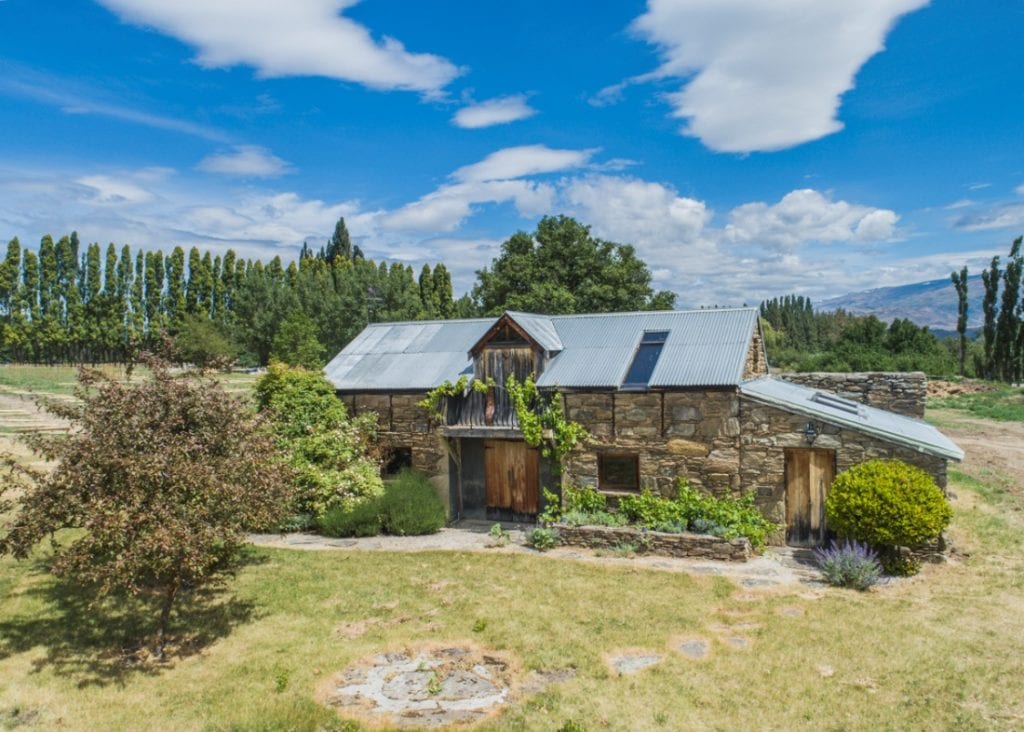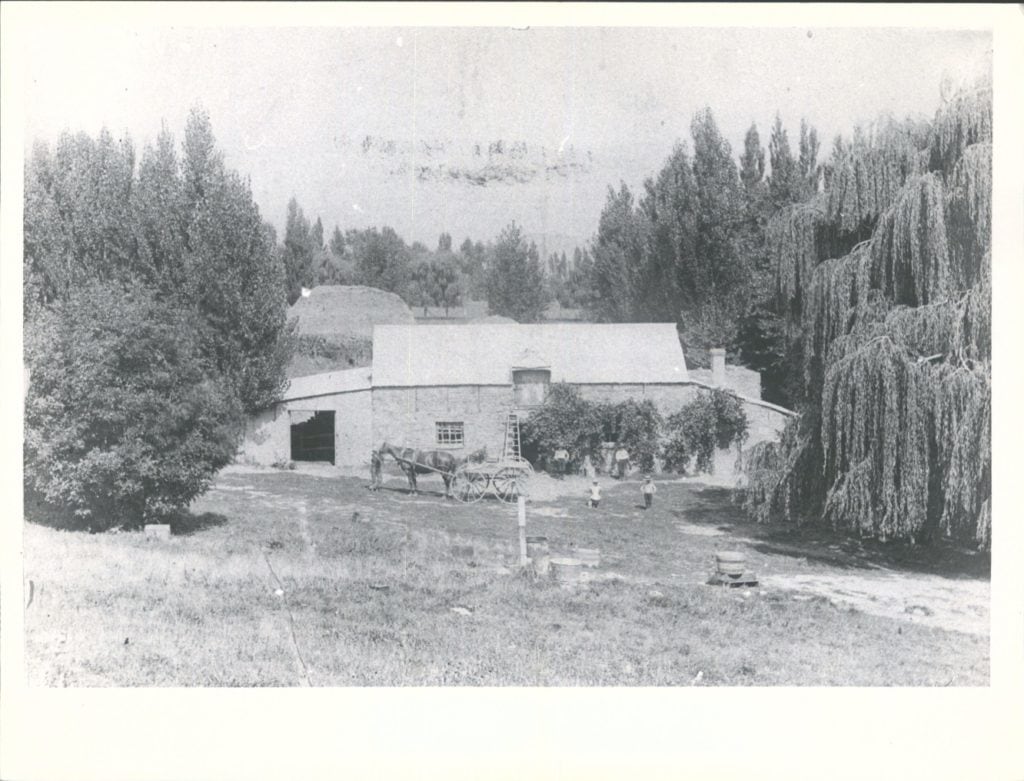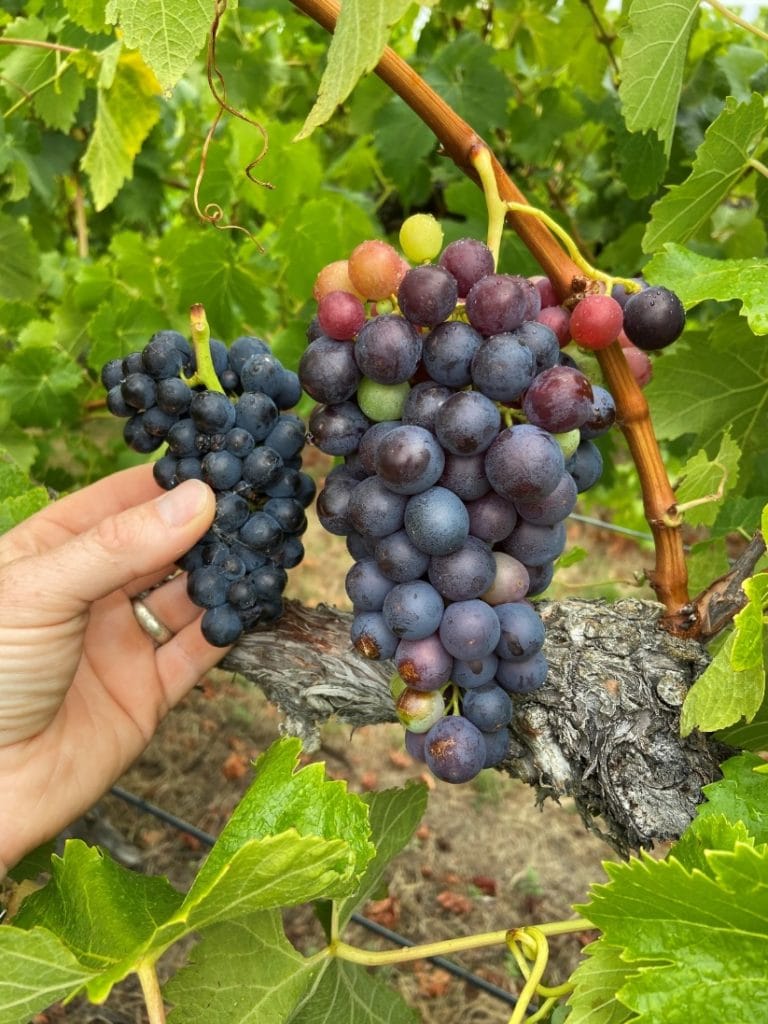The Central Otago region is steeped in viticultural history. Some of the first grapes were planted more than 150 years ago by French immigrant Jean Desire Feraud on his property near Clyde. A goldminer by trade, Feraud benefited from his winemaking heritage and his award-winning Monte Christo Winery garnered international recognition.
Now, thanks to the wonders of molecular testing, Bragato Research Institute has confirmed Feraud’s legacy lives on through the recently identified Trollinger vine located at the present-day Monte Christo Winery.
Viticulturist Sam Woods has been with Monte Christo since July last year, assisting the new property owners with their efforts to restore the winery to its former glory. It’s a role that so far has involved both the growing of grapes for future wine production and looking back at the early days of winemaking in New Zealand.

Monte Christo Winery. Supplied by Sam Woods, Monte Christo Winery.
“Restoring the Monte Christo Winery is an exciting opportunity to tell the story of early settler winemaking in New Zealand. This is the oldest known winery in the region, and I’ve been digging deeper through old newspapers and connecting opinion pieces from the past with our modern understanding of winemaking.
“Part of my research has involved working with Darrell at the Bragato Research Institute to identify some of the old, established grapevines on the Monte Christo property. The idea of getting the vines identified through BRI’s molecular testing first came up through a conversation with another local viticulturist who had used the service before.
“I reached out to Darrell and the timing was good, so we went for it. He sent me the cards for taking a sample and the results came back quickly. We learned the vine is a Trollinger, a variety with links to Italy and Germany. Overall, it was a fun and interesting process,” said Mr Woods.

The original Monte Christo Winery featuring one of Feraud’s original vines. Supplied by Sam Woods, Monte Christo Winery.
The unique Central Otago terroir is renowned for producing quality wines. The Bragato Research Institute’s namesake and expert viticulturist Romeo Bragato visited Central Otago in 1885 and pronounced it “suitable for grape growing.” Despite this positive assessment, a period of dormancy set in until commercial winemaking returned to the region in the 1980s.
Viticulturist Sam Woods explained while Central Otago is an ideal location for producing premium Pinot Noir and Chardonnay, the semi-continental climate isn’t a perfect fit for commercial production of Trollinger wine as grapes ripen late and rarely reach a desired sweetness.
“It may be possible to produce a barrel of accessible Trollinger wine in a particularly good year, but we will primarily cultivate the vines around Monte Christo as a living reference to our winery’s provenance. The vine is attractive with large bunches of red, oval grapes and it will take pride of place in our heritage tasting rooms that are set to open in 2023,” said Mr Woods.

A harvest time comparison between Pinot Noir [left] and Trollinger [right]. Credit: Sam Woods, Monte Christo Winery.
“At BRI, we offer New Zealand’s only genetic variety testing for grapevines. This involves DNA sequencing technology and at first it can sound complicated, but from our customer’s side it’s a straight-forward process to collect a sample, and unlike other identification methods it doesn’t require plants to be sent overseas or assessed in person.
“The customer simply takes a young leaf or rootstock from the vine of interest, presses it onto a custom-made card that we provide, and then posts the card back to us. We then analyse the sample for specific genetic markers and match it to other samples in the international database, before promptly delivering the variety and species results,” said Dr Lizamore.
The BRI grapevine identification process has been designed to allow for multiple markers to be tested simultaneously, meaning samples are processed faster and more cost-effectively, without compromising the accuracy of results.
Testing is scheduled at certain times throughout the year. Register your interest at vine@bri.co.nz before the end of October to have your vines identified this Spring.

















